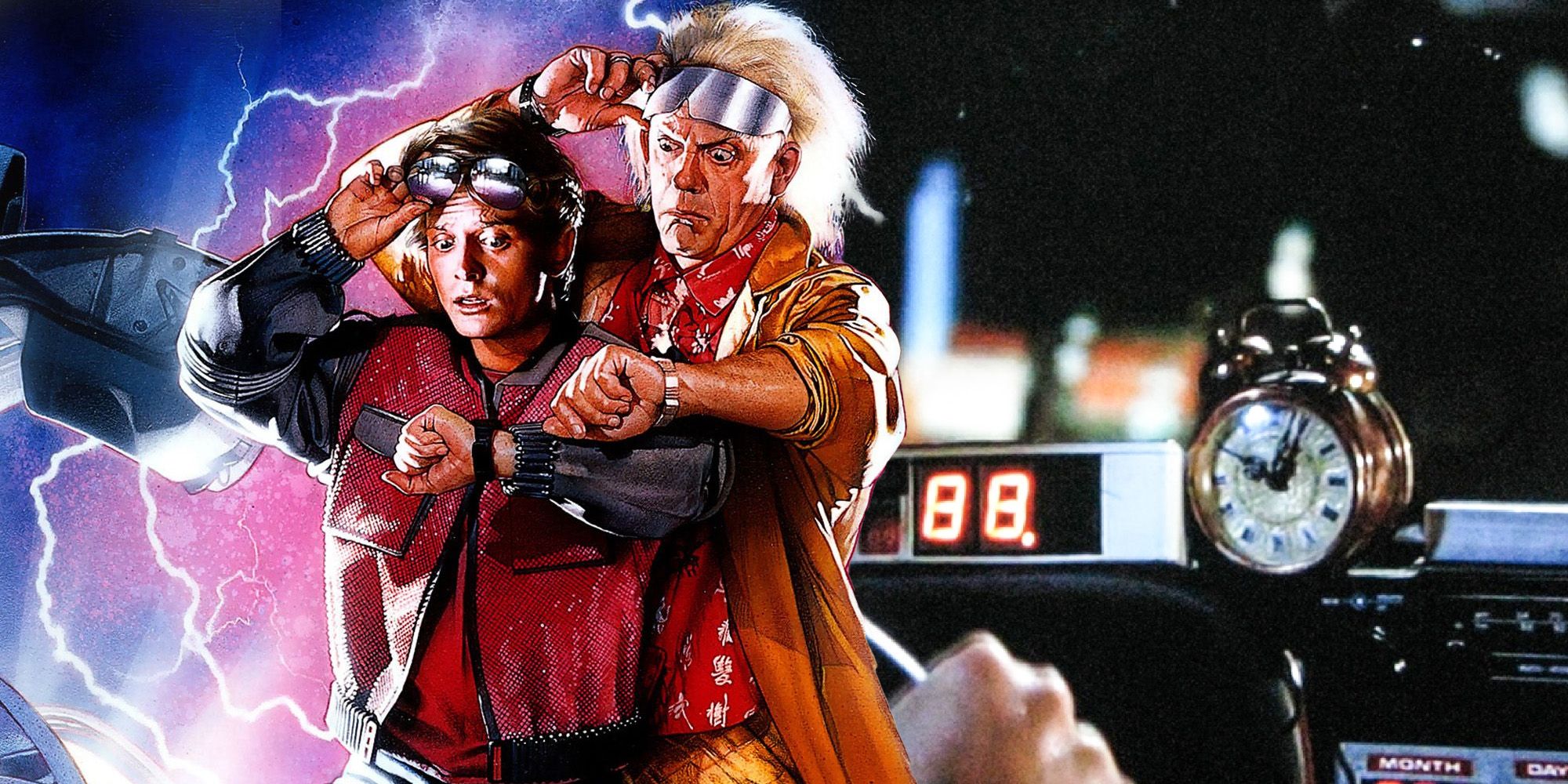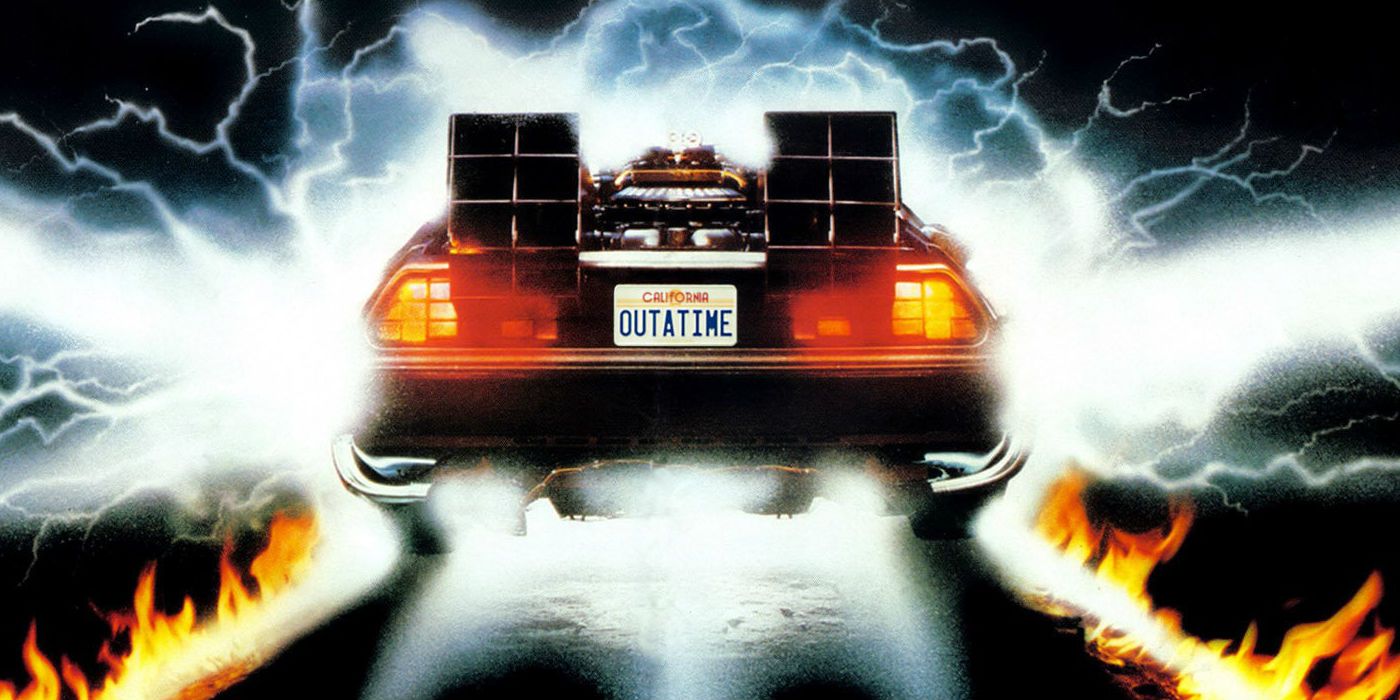Doc Brown’s souped-up DeLorean from Back to the Future must reach exactly 88mph to travel through time, but what’s the significance of this number? Some simple math can provide a perfectly plausible scientific explanation for how Doc arrives at the number forever emblazoned in the minds of sci-fi fans everywhere. On top of that, there’s also an explanation, requiring no math whatsoever, for how the producers of Back to the Future arrived at this number.
Back to the Future helped popularize the concept of time travel back in 1985 by using a formula that encapsulates the head-scratching physics theory into a digestible, wildly entertaining movie that still has fans talking nearly 40-years later. The sci-fi classic centers on a teenager, Marty McFly, who inadvertently travels back to 1955 and must enlist the help of eccentric scientist Doctor Emmett “Doc” Brown in order to travel back to the future. To accomplish this, Doc Brown invents the flux capacitor and attaches it to a DeLorean, along with a plethora of other bells and whistles, thus creating a practical yet effective time machine.
Although traveling forward in time is an accepted scientific possibility, traveling backwards in time is far more theoretical, but the DeLorean may be able to achieve such a feat thanks to the flux capacitor. A common theory of backwards time travel involves sending an object, like a DeLorean, through a traversable wormhole. Doc Brown’s flux capacitor, which he describes as making time travel possible, may open such a wormhole for a limited amount of time when the car reaches a certain speed. Therefore, Doc Brown could have mathematically arrived at the 88mph speed by calculating how fast the DeLorean needs to travel in relation to how long the wormhole stays open.
A calculation of the DeLorean’s speed relative to the wormhole’s stability, or time it remains open, needs to also account for the length of the DeLorean, which is 4.216 meters. Doc needs to know how long it would take the DeLorean to travel its own length. Assuming the wormhole remains open for .1072 seconds, and that Doc knew this fact, he could divide the length of the car by 107.2, arriving at 39.33 meters per second or 88mph. Setting the flux capacitor to open the wormhole at a slower or faster speed could result in the wormhole collapsing on the car and effectively cutting it in half or missing the wormhole all together.
One theory suggests that the .1072 second interval was chosen by Doc so that after the DeLorean travels through time it arrives at its destination at the same physical space from which it departed. This requires math best left to a physicist, along with a few leaps of faith, which is why it’s more plausible to assume that the interval was a technological limitation of the flux capacitor. Another, less scientific, explanation is that Doc chose the double 8s because the number is the infinity sign rotated 90 degrees.
The bigger takeaway here is that none of the science behind Doc’s time machine really matters because Back to the Future is so entertaining. A lesser movie that tackles such a complex subject may leave fans scratching their heads as to how the science works, but Back to the Future is packed with so many memorable characters and moments that the science behind it all quickly fades away. At the end of day, in-universe explanations for the 88mph number are fun to dissect, but there's another more practical reason why the number was chosen. In an interview with ComicBook, Back to the Future producer and co-writer Bob Gale reveals, “First of all we wanted it to be a speed that somebody wouldn’t accidentally drive at. The other thing is, it’s easy to remember.” It would be hard to accidentally reach speeds over 80mph, so that makes sense. As for the second reason, well, fans are still talking about it.


